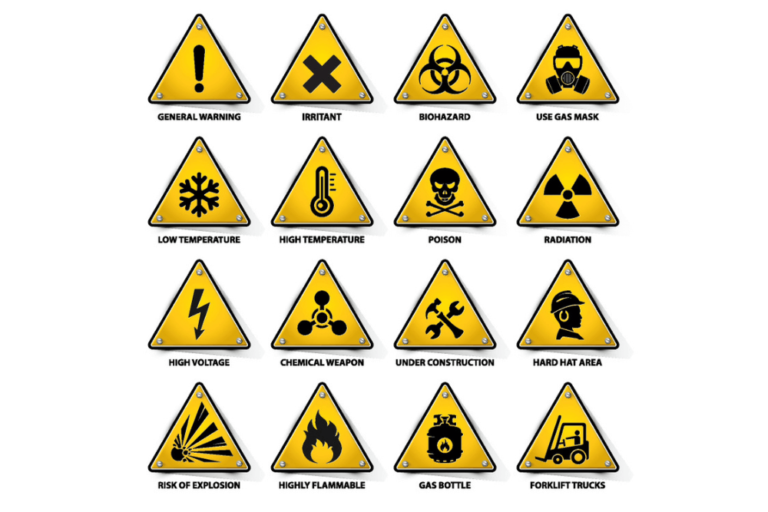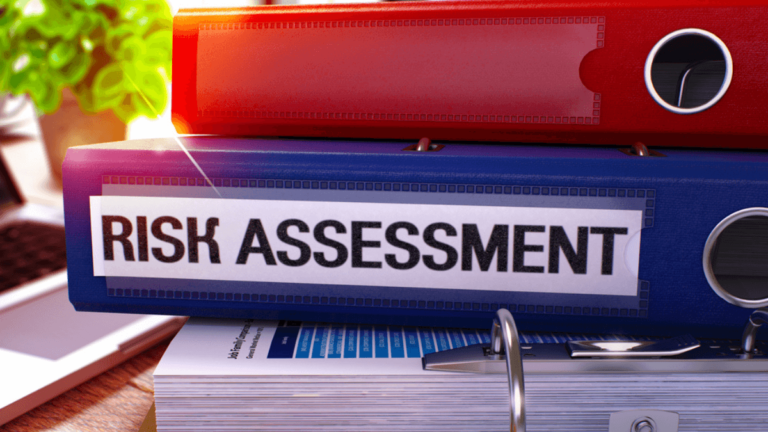Before you start the risk assessment for your company, you should gather all the information you need. For instance, collect necessary resource, laws and regulations to follow, what personnel are involved. You can complete the risk assessment in five simple steps. These are-
1. Determine potential hazards in the workplace
2. Identify who might be harmed and how
3. Evaluate risk and taking suitable precautions
4. Record your findings
5. Review your assessment and update it, if necessary.
These five steps to carry out risk assessment are described below.
Step 1: Identify Potential Hazards in the Workplace
The first thing you need to do is identify any potential hazards within a workplace that may cause harm to your employees or business.

Take the following simple steps to identify workplace hazards:
- Observe. Walk around your workplace and look for what activities, tasks, agents, elements, substances could harm the workforce.
- Group the potential hazards into five categories. You can group them in biological, chemical, ergonomic, physical and psychological.
- Look for previous accidents and ill-health records. Because it will help you identify the obvious or less obvious hazards.
- Check product manufacturers’ data sheets, instructions, information, and guidance for identifying hazards.
- Consult with employees (and others) who are performing activities, tasks or processes.
Step 2: Identify Who might be Harmed and How
The next step is to identify who might be harmed and how they will be affected by those potential hazards.

The way hazard might harm or pose a danger through direct contact or indirect contact. Then you can list them by name or identify them in groups, including:
Step 3: Evaluate Risk and Taking Necessary Precautions
Now, you need to find the probability and how severe the result will be if a hazard occurs in the workplace. After evaluating the hazards, you can take the necessary controls to reduce this level of risk. By considering all relevant factors, you can ensure the health and safety of the workforce. These factors are:
- What is the probability that harm may occur?
- How severe can the harm be if that occurs?
- Do you have the necessary knowledge about eliminating, reducing or controlling hazards and risks?
- What is the availability of control measures designed to remove, mitigate or effectively control the risk?
- Do you have enough fund or resource to take the necessary steps?
This risk assessment evaluation will help you determine the risk level. Also, help you identify where you should reduce the risk level and which hazards you should prioritise first.
Step 4: Record Your Findings
In England, if you have more than five employees in your office, you are legally obligated to write down your risk assessment process. And an easy way to keep track of the risks and control is to record your findings on a risk assessment form.

Your risk assessment plan should include, what’s the hazards you’ve found, the people they affect, and how you plan to mitigate them. The record should show that you have:
- Performed a proper check of your workspace.
- Assessed the probability of anyone would be affected.
- Controlled and dealt with them if hazards were present.
- Initiated the necessary steps to keep risks low.
- Consulted with the staff and kept them involved with the process.
Step 5: Review Your Assessment and Update it, if Necessary
As an employer, you should review the assessment periodically, while keeping in mind the differences between hazards and risks. Then you should update it, if necessary. Because the workplace is always changing, so the risk to your premise’s changes also.
Also, an excellent way to find out when you may need to review your processes are:
- After any major change within the workplace or process in question.
- If an accident or ill-health incident has occurred in the workplace.
- After an employee reported a near-miss incident.
Lastly, the only way to stay on top of these new hazards and workplace danger is to review and update your risk assessment process continuously.


![]() 15 minutes
15 minutes